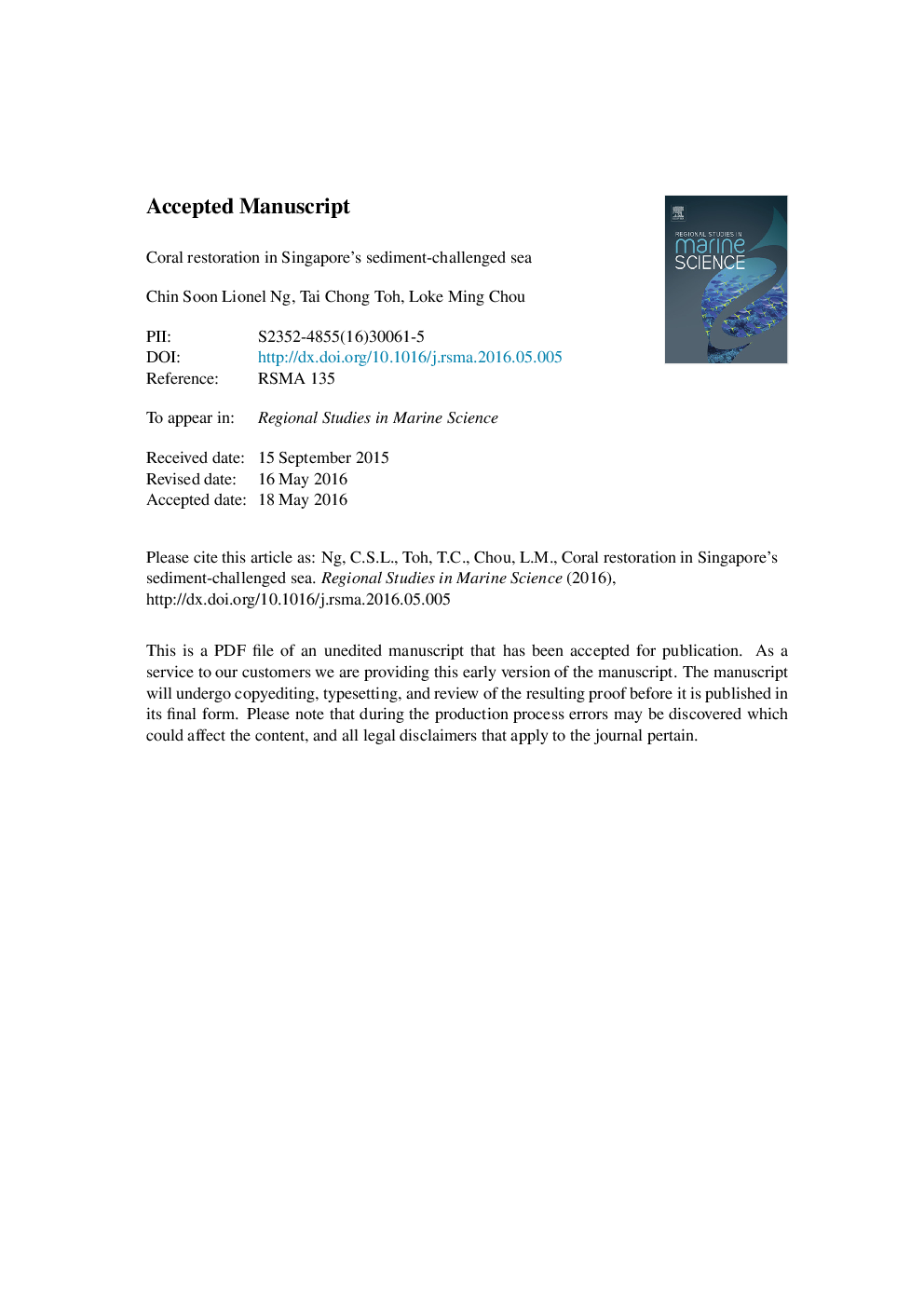| Article ID | Journal | Published Year | Pages | File Type |
|---|---|---|---|---|
| 5758184 | Regional Studies in Marine Science | 2016 | 28 Pages |
Abstract
Singapore's coral reefs have been exposed to five decades of increased sedimentation that reduced underwater visibility from over 10 m in the early 1960s to under 2 m today. The lower depth limit of scleractinian coral growth moved up from 10 m to 6 m, while live coral cover decline is less apparent now than in the early decades of augmented sediment loading. Coral community structure has changed with dominance shifting to more low-light tolerant species such as those of the genera Pectinia and Turbinaria. Reef restoration to increase coral cover of degraded reefs and initiate colonisation of non-reef areas is considered to be viable following observations of predictable mass spawning events, recruitment and vigorous growth, but the techniques employed need to account for the high sediment conditions and destabilised reef substrate. The deployment of fibreglass artificial reef units increased opportunities for coral establishment, and supported at least 106 reef taxa, including 29 scleractinian genera after 10 years. As vital components of restoration, coral nurseries comprising mesh-net platforms raised above the reef floor prevented sediment accumulation and smothering, and enabled the rearing of coral fragments and juveniles with reduced mortality. This included the nurturing of 'corals of opportunity' (naturally fragmented pieces of live coral lying on the reef bed as well as recruits settled on loose rubble), which would otherwise be killed by sedimentation. Transplants of massive or encrusting species displayed higher survival over branching ones. Restoration strategies need to be adapted to changed environmental conditions caused by anthropogenic disturbances.
Related Topics
Physical Sciences and Engineering
Earth and Planetary Sciences
Oceanography
Authors
Chin Soon Lionel Ng, Tai Chong Toh, Loke Ming Chou,
